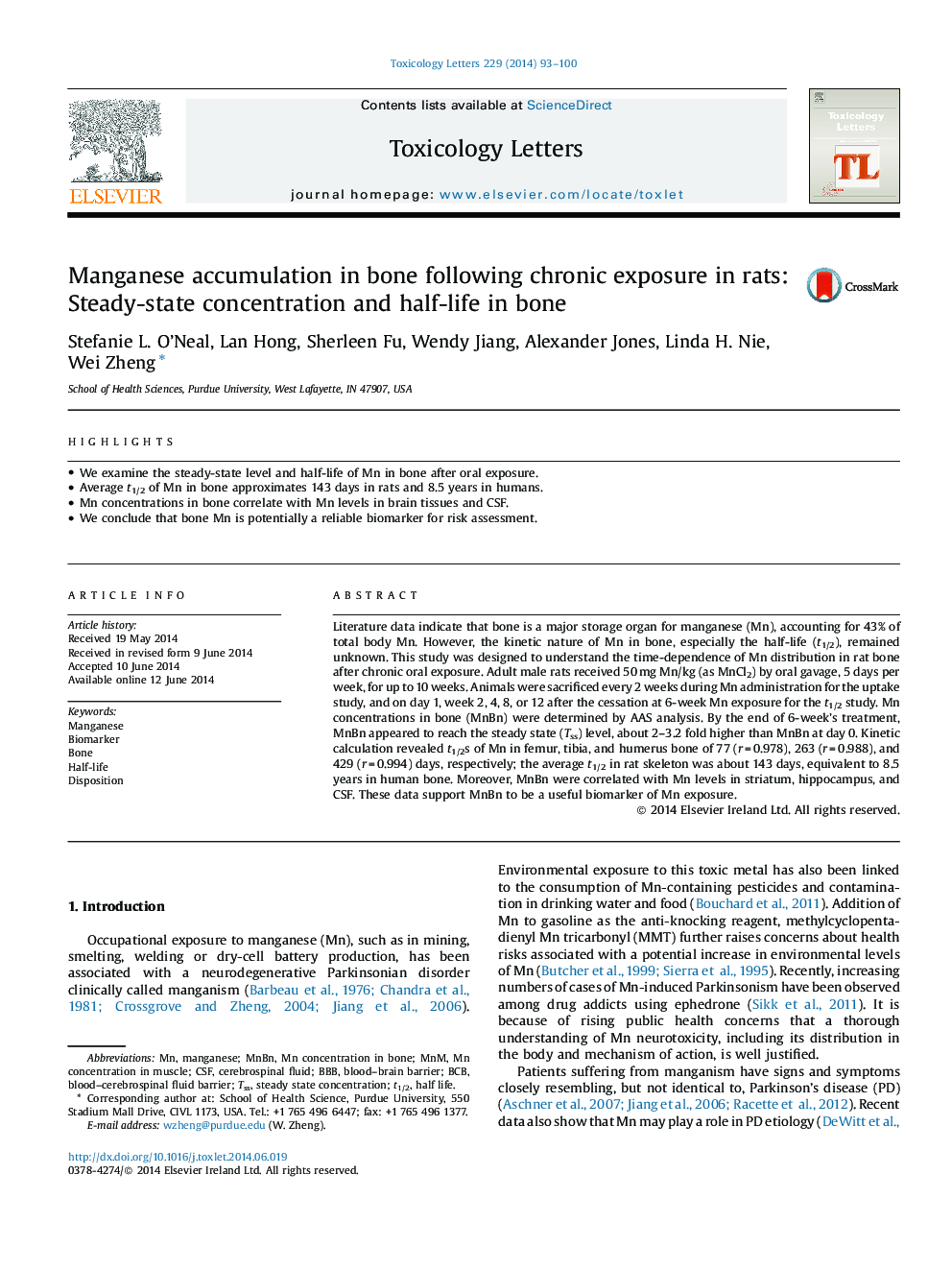| Article ID | Journal | Published Year | Pages | File Type |
|---|---|---|---|---|
| 5860243 | Toxicology Letters | 2014 | 8 Pages |
â¢We examine the steady-state level and half-life of Mn in bone after oral exposure.â¢Average t1/2 of Mn in bone approximates 143 days in rats and 8.5 years in humans.â¢Mn concentrations in bone correlate with Mn levels in brain tissues and CSF.â¢We conclude that bone Mn is potentially a reliable biomarker for risk assessment.
Literature data indicate that bone is a major storage organ for manganese (Mn), accounting for 43% of total body Mn. However, the kinetic nature of Mn in bone, especially the half-life (t1/2), remained unknown. This study was designed to understand the time-dependence of Mn distribution in rat bone after chronic oral exposure. Adult male rats received 50 mg Mn/kg (as MnCl2) by oral gavage, 5 days per week, for up to 10 weeks. Animals were sacrificed every 2 weeks during Mn administration for the uptake study, and on day 1, week 2, 4, 8, or 12 after the cessation at 6-week Mn exposure for the t1/2 study. Mn concentrations in bone (MnBn) were determined by AAS analysis. By the end of 6-week's treatment, MnBn appeared to reach the steady state (Tss) level, about 2-3.2 fold higher than MnBn at day 0. Kinetic calculation revealed t1/2s of Mn in femur, tibia, and humerus bone of 77 (r = 0.978), 263 (r = 0.988), and 429 (r = 0.994) days, respectively; the average t1/2 in rat skeleton was about 143 days, equivalent to 8.5 years in human bone. Moreover, MnBn were correlated with Mn levels in striatum, hippocampus, and CSF. These data support MnBn to be a useful biomarker of Mn exposure.
